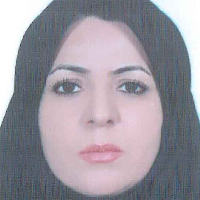Estimation of winter wheat (Triticum aestivum L.) leaf pigments content using Landsat‑8 imagery
Leaf chlorophyll content in plants indicates their health, physiological status, their photosynthetic activity and nitrogen content. Monitoring pigment content of crop tissues helps identification of plant nutrition and environmenta stresses before serious damages to crop and yield. This study was conducted to estimate the leaf pigments content of winter wheat (Triticum aestivum L.) as one of the most important crops using Landsat 8 satellite data and statistical models in Shahrekord county, Chaharmahal and Bakhtiari province in 2017.
For this purpose, eight fields under winter wheat cultivation with an area between 10 to 60 hectares throughout Shahrekord county were considered. The location of 120 sampling units was randomly and determined in fields using ground positioning system (GPS). The sampling units were 30 × 30 m squares according to Landsat pixels. In each unit 5 plots (0.5 × 0.5 m) were considered, four plots in the corners and one in the center of the unit. Crop sampling and passing over of satellite were synchoronous. The samples were transferred to the laboratory and their chlorophyll and carotenoid content were measured. The corresponded Landsat 8 data were processed and and vegetation indices were calculated. Simple and multiple stepwise linear regression methods were used to obtain models for estimating chlorophylls and carotenoids content of wheat leaves.
The results showed that among the selected indices, PSRI index for estimating chlorophyll a content (R2 = 0.408 and RMSE= 8.38 µg.cm-2), chlorophyll b (R2 = 0.400 and RMSE= 3.69 µg.cm-2) and total chlorophyll (R2 = 0.500 and RMSE= 10.82 µg.cm-2), CRI index (R2 = 0.480 and RMSE= 2.92 µg.cm-2) for estimating leaf carotenoid content and SIPI index (R2 = 0.603 and RMSE = 0.17 µg.cm-2) for estimating carotenoid to chlorophyll a ratio had the best performance in simple linear regression. Models based on multiple stepwise linear regression estimated chlorophyll a content with R2 = 0.557 and RMSE = 7.73 µg.cm-2, chlorophyll b with R2 = 0.471 and RMSE = 3.69 µg.cm-2, total chlorophyll with R2 = 0.611 and RMSE = 10.10 µg.cm-2, carotenoids with R2 = 0.50 and RMSE = 2.01 µg.cm-2 and carotenoid to chlorophyll a ratio with R2 = 0.756 and RMSE = 0.12 µg.cm-2. PSRI and CVI indices for estimating chlorophyll a and total chlorophyll content, PSRI index for estimating chlorophyll b content, CRI and TCI / OSAVI indices for estimating carotenoid content and SIPI, GNDVI, EVI, CIgreen, TCARI and OSAVI for carotenoid to chlorophyll a ratio of wheat leaf were the most effective indices in a stepwise multiple linear regression models. In our study, estimation of chlorophyll a, total, carotenoid content and carotenoid to chlorophyll a ratio based on stepwise multiple linear regression was superior to simple linear regression models. Estimation of chlorophyll b content was the same in both methods.
The use of vegetation indices derived from Landsat 8 data makes it possible to estimate the content of wheat leaf pigments with relatively good results in the study area. Such information is important for farmers to initially monitor the quality and quantity of production and leads to a practical and efficient planning in the fertilization process.
-
Ecological response to surface fires: insights from four plant communities in the eastern foothills of the Little Ararat Mountains
Saeed Amini, Ali Soltani *,
Wood & Forest Science and Technology, -
Spectral reflectance simulation and estimation of chlorophyll and water content of Pistacia mutica leaf based on PROSPECT4 model
Narges Poorghasemi, *, Ali Jafari, HamidReza Riyahi Bakhtyari
Wood & Forest Science and Technology, -
Estimation of above-ground biomass of winter wheat (Triticum aestivum L.) using multiple linear regression, artificial neural network models remote sensing data
, Mehdi Naderi Khorasgani *,
Electronic Journal of Crop Production, -
Estimation of irrigated wheat yield (Triticum aestivum L.) using data of remote sensing data (Case study in Shahrekord County)
*, Mehdi Naderi Khorasgani,
Electronic Journal of Crop Production, -
Effects of drought stress and humic acid on some physiological parameters of lima bean (Phaseolus lunatus L.)
Sedigheh Beheshti, Dr. *
Journal of Plant Process and Function,



